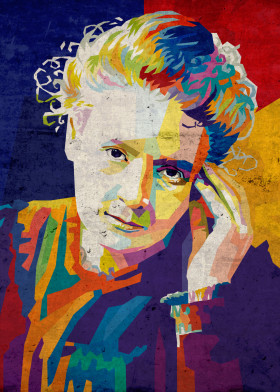The Curious Case of Curie
- teenbellemag

- May 16, 2019
- 4 min read
In the present climate, there is an upcoming wave of female researchers and experts in the field of STEM (Science, Technology, Engineering and Mathematics). Some studies show that the number of girls opting for STEM subjects in the academic field is on a steady increase but the gender gap is on par as well. 86% of early career doctorate holders with a science and engineering degree are either white or Asian, 2.7 are African-American women, 3.6 are Latina, 3.1 are other women racially underrepresented in science and engineering
There is a new world revolution; I call it the first step towards equality in the scientific world, which has long been dominated by one gender, while the other genders struggle to find recognition.
The relative ease through which women are now able to enter STEM subjects during their school and college years has not been possible without much revolt from the then male-dominated society.
In the late 19th century, a young girl with her eyes full of dreams and ambitions, graduated from a gymnasium for girls with a gold medal. Yet, when she applied for further studies, she was rejected from the University of Warsaw, owing to the fact that she was a woman. Forced, by the rejection, to enroll into an underground educational enterprise called ‘The Flying University’ for an undergraduate degree, Maria Salomea Skłodowska, famously known as ‘Marie Curie’, excelled her subjects.
In 1867, Marie stepped into scientific research work with an investigation of the magnetic properties of various quenched steels. This work would later be instrumental to Marie’s investigation of the emission of uranium rays from different materials. Drawn towards each other by their common passion for Natural Sciences, in the same year, Marie and Pierre Curie developed feelings for each other while working together. Both of them eventually tied the knot, and became the power-couple STEM students know of today.

Curie took keen interest in the work of Henri Becquerel, another scientist who was in the process of discovering Radioactivity, a term coined by Marie herself. Both the scientists worked together to understand the concept, and soon, Pierre sidelined his own ongoing research, to aid Marie in her work, which lead to the seemingly miraculous discoveries of new radioactive elements: Radium and Polonium. Becquerel and Pierre were nominated for the Nobel Prize in Physics in the year 1903 for this discovery; but Marie was denied her due recognition. Pierre took a stand for his wife, and consequently, the Nobel Prize in Physics 1903 was divided, one half awarded to Antoine Henri Becquerel "in recognition of the extraordinary services he has rendered by his discovery of spontaneous radioactivity", the other half jointly to Pierre Curie and Marie Curie, née Sklodowska "in recognition of the extraordinary services they have rendered by their joint researches on the radiation phenomena discovered by Professor Henri Becquerel."
After this recognition, Marie was unstoppable. She had finally gained the credibility necessary for a woman immersed in the field of scientific research to be taken seriously without the eminent support of a man. She became the first woman to ever win a Nobel Prize, the first person to win two Nobel Prizes, and the only person to win in multiple sciences. But the facts invoke uncertainties in my brain. I am forced to imagine the consequences, had Pierre not declared Marie’s contribution indispensable. Would she have received due credit? Would it have been possible for her to win the 1911 Nobel Prize in Chemistry? Would she be financially aided as she was, without her husband’s support? All of these questions point towards the undeniably strong and unfair influence of men in the field of science. They point towards the conclusion that for a woman to gain recognition in the field, she must be supported, encouraged, and actively advocated for by a man. As Melinda Gates once pointed out, “Women did not create the barriers in tech and we cannot break them down all alone. Male allies are absolutely critical in this work and we’ll need more of them. But we can lead the way.”
Marie, throughout her life, actively promoted the use of radium to alleviate suffering. She discovered X-Rays with a fellow scientist and Nobel laureate Wilhelm Roentgen, in 1895. X-Rays proved to be of great importance in WW1, when Curie invested her time and effort to help injured soldiers recover. For this purpose, she invented a ‘Radiological Car’, consisting of an X-Ray machine, photographic darkroom equipment, and an electrical generator to power the car. These cars required Curie to learn driving, fixing a tire, dealing with accidents, and so on.
Curie died in 1934, due to aplastic anemia, which many believed was caused by prolonged exposure to radiation. Thus, in the end, she let her passion, her work, consume her completely.
Equality of opportunity, equality of pay, and equality of recognition are all areas where a revolution is in process. How many more women will it take, for the world of science to accept us as equals? I do not know. What I do know, is that we won’t stop until we get there; in Curie’s own words,
“I was taught that the way of progress was neither swift, nor easy."
Sources:
Marie Sktodowska Curie a metallurgist: her study of magnetic properties of quenched steels (1894-1897) - a report by Hardouin Duparc, Olivier








Comments